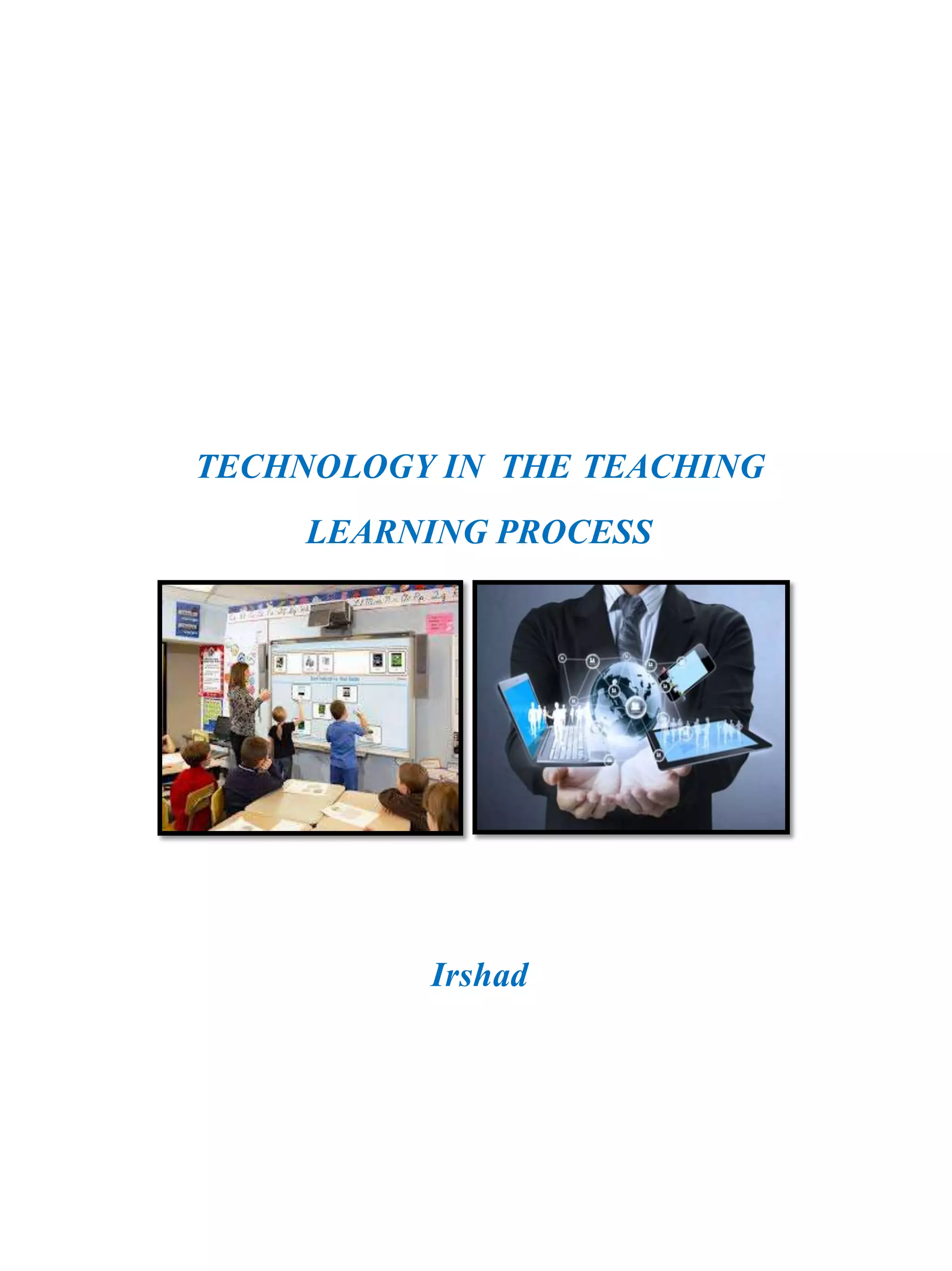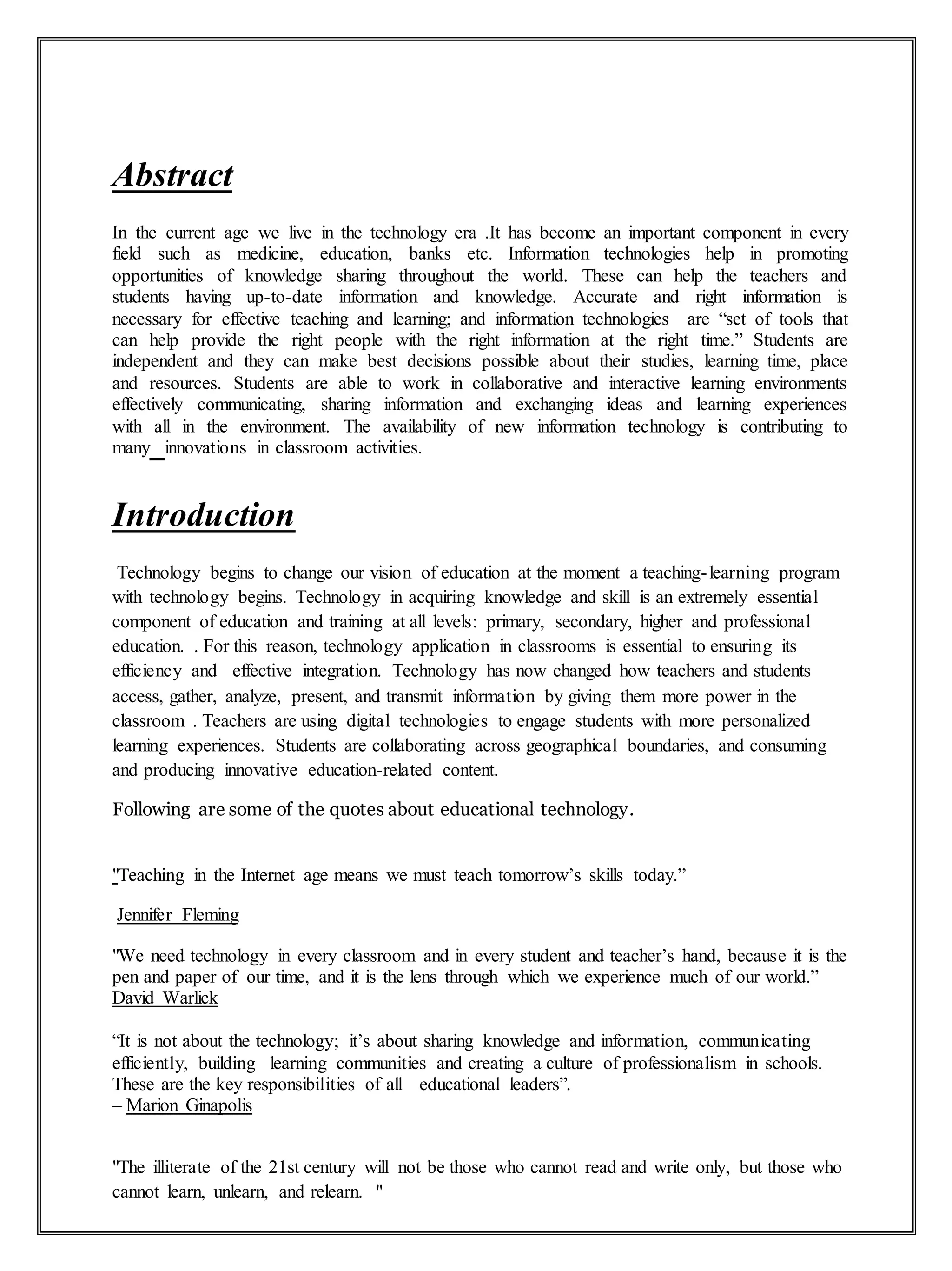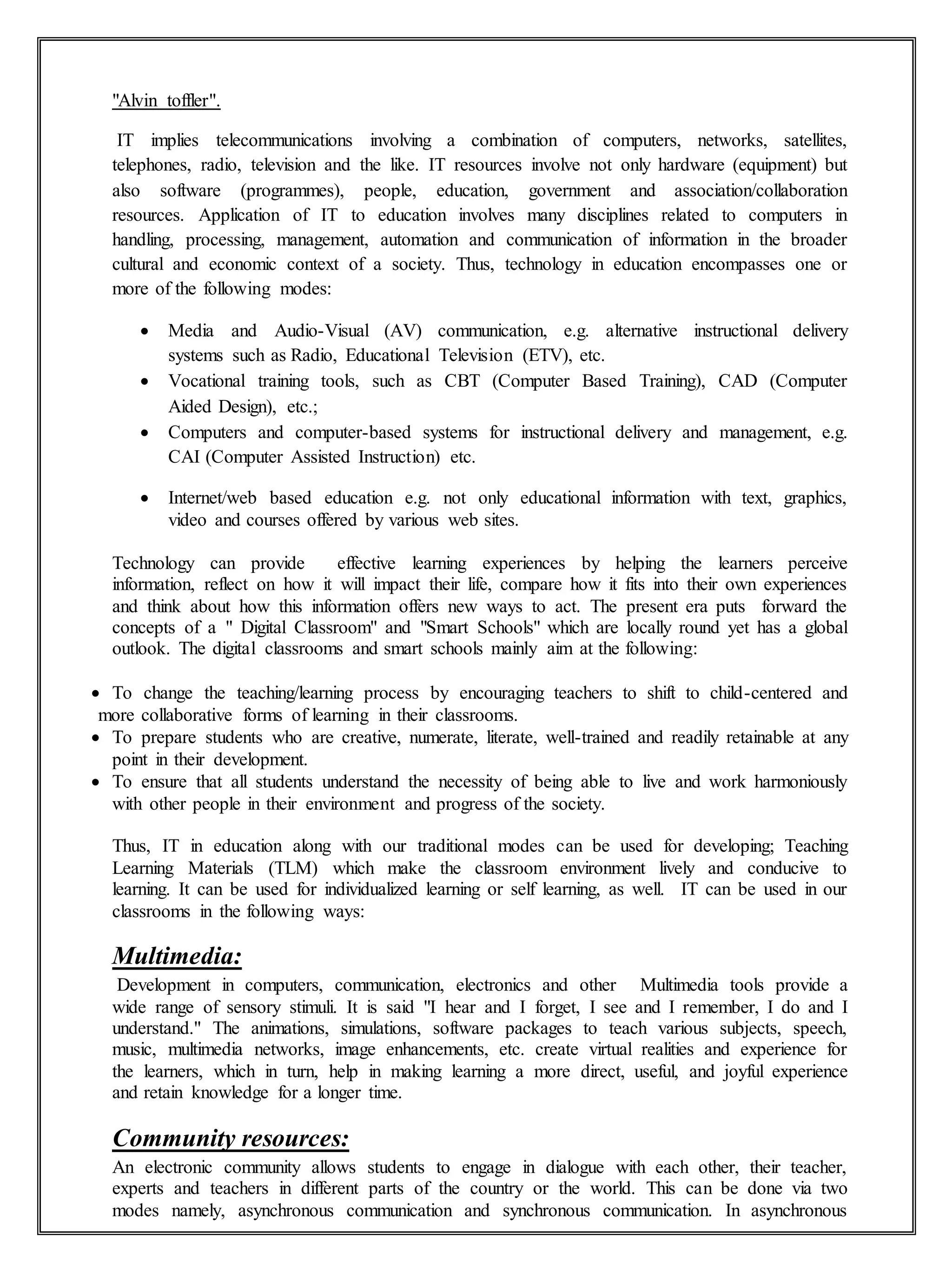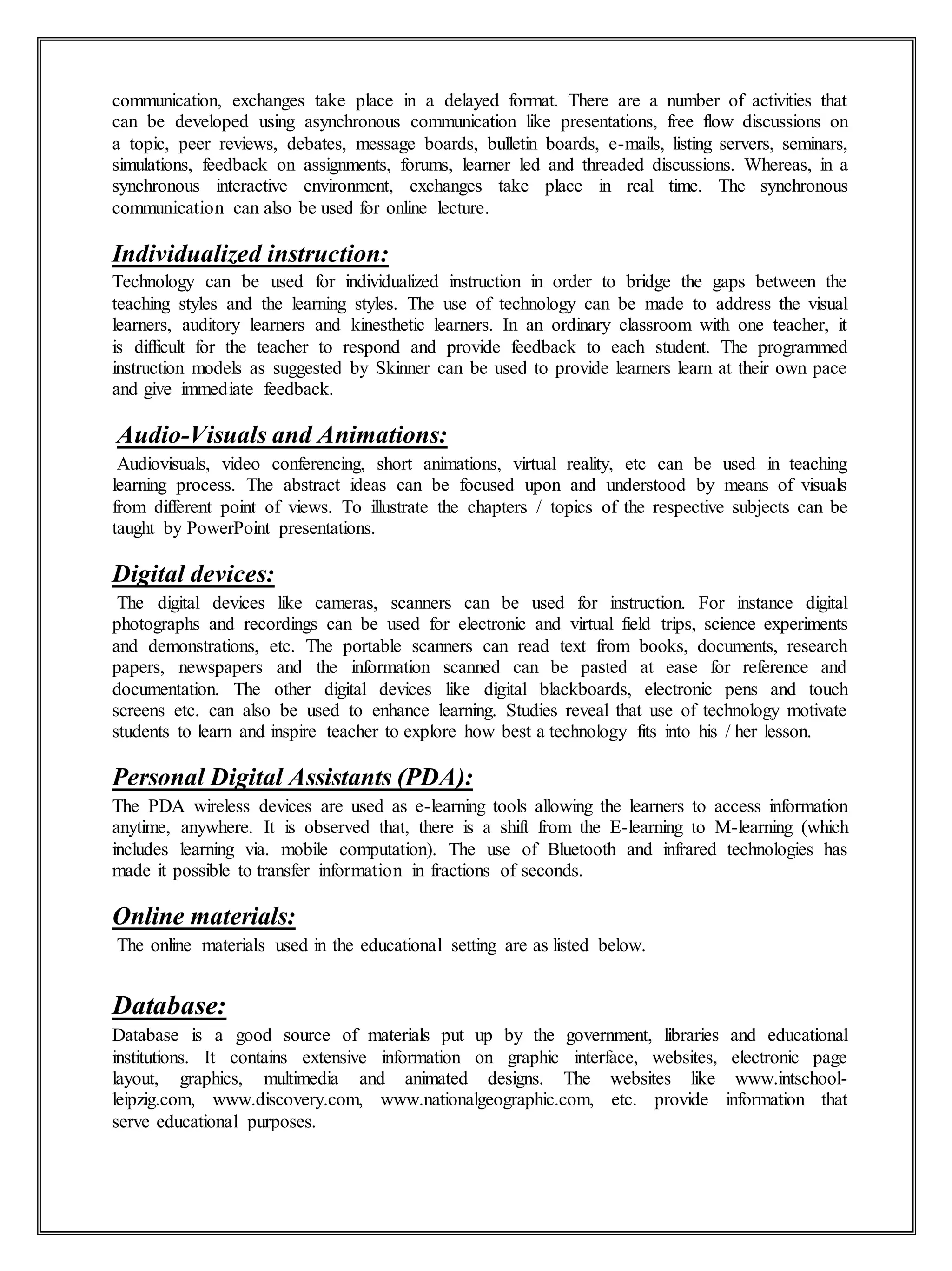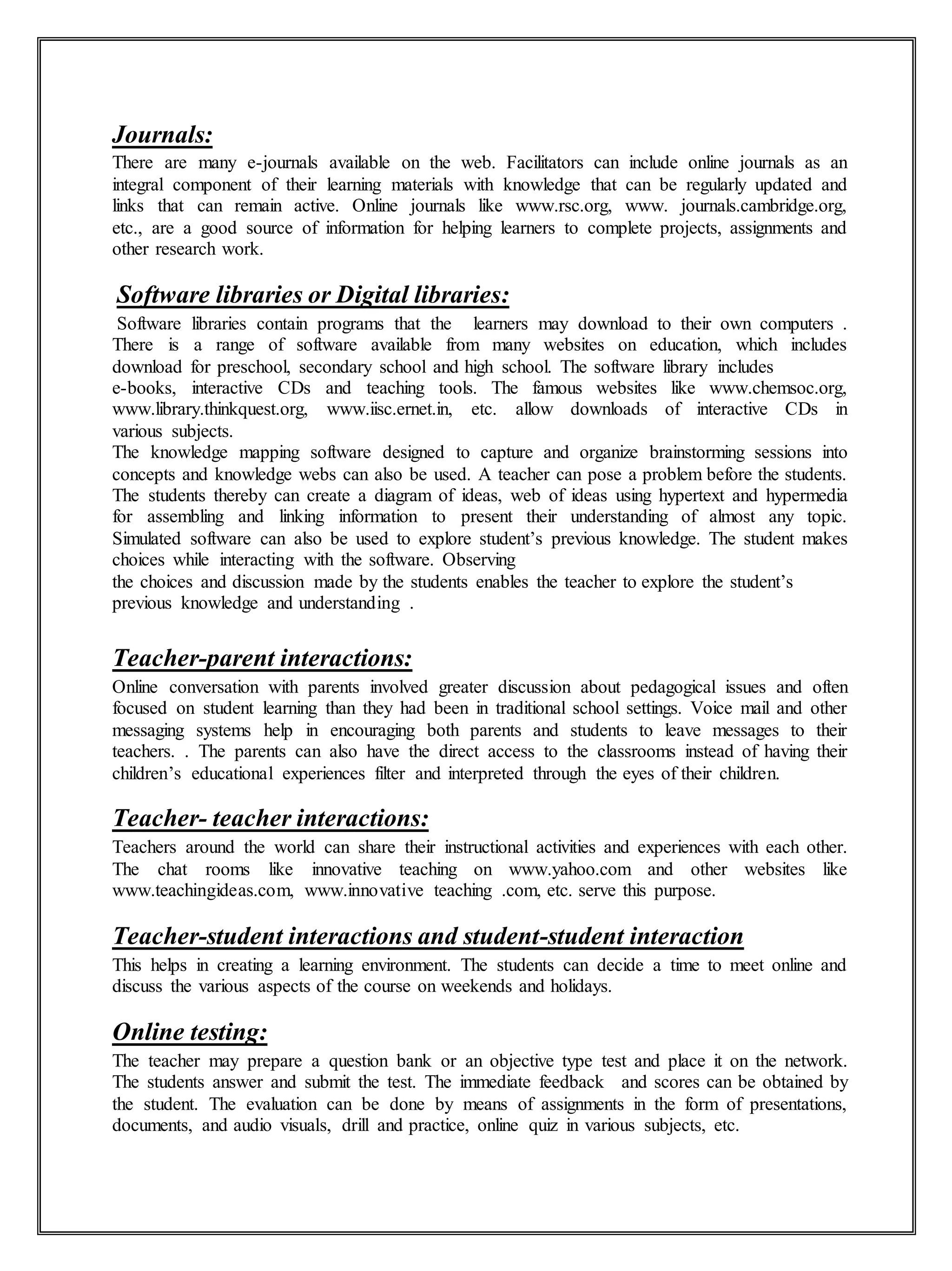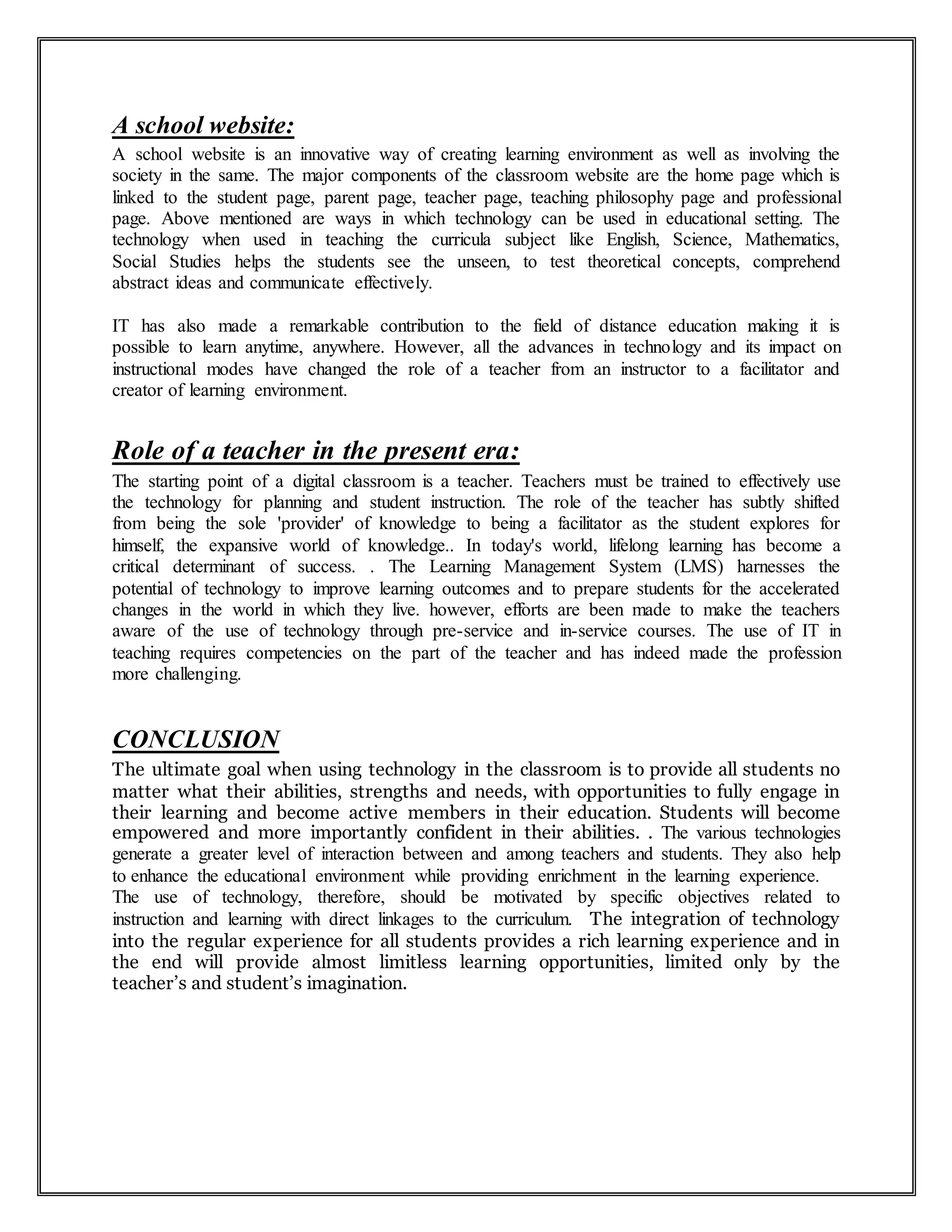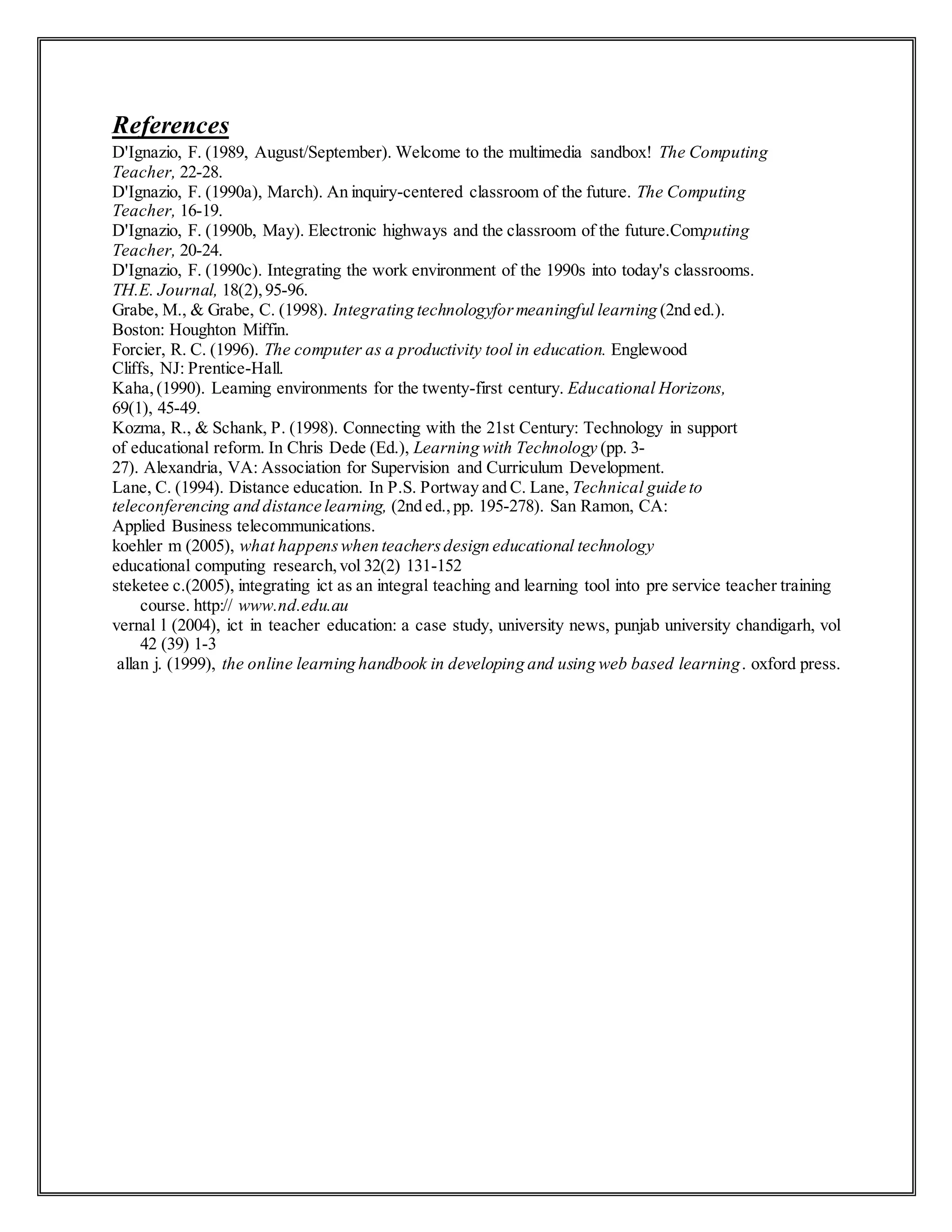This document discusses the role of technology in the teaching and learning process. It begins by stating that technology has become an important part of many fields including education. It then provides examples of how technology can be used in the classroom, such as for multimedia, individualized instruction, online materials, and teacher/student interactions. The role of the teacher is also discussed, noting they now act as a facilitator rather than sole provider of knowledge. The conclusion states that when used properly, technology can empower students and enhance the educational experience by generating greater interaction and providing rich learning opportunities.
